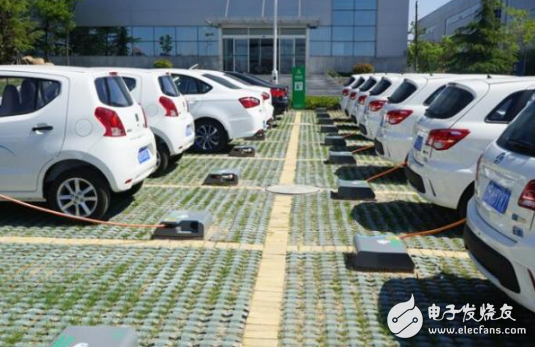The development, promotion and popularization of new energy vehicles are not only the need to reduce pollution emissions, but also the inevitable choice for human society to reduce its dependence on oil and curb excessive exploitation of oil. New energy vehicles are just beginning. The future development space and direction should be to develop high-efficiency solar panels and make full use of solar energy. This is an inexhaustible source of energy. However, it is reported that subsidies for new energy vehicles will accelerate the decline, and whether new energy vehicles can truly get rid of subsidies.
The tightening of subsidies has become a reality. Recently, it is reported that the subsidies for new energy vehicles will accelerate in 2018, and the subsidies for new energy vehicles with a cruising range of less than 150 kilometers will be zero, and local subsidies will be cancelled.

Although the above news has not been confirmed by the relevant authorities, the industry generally believes that the subsidy policy has been declining has become a trend, the focus of car companies should be from "how to take subsidies" to "how to launch competitive products."
Stimulated by continued policy support and financial subsidies, the new energy vehicle industry has experienced rapid growth in the past few years. Statistics show that in the first 11 months of this year, the production and sales of new energy vehicles were 639,000 and 609,000 respectively, up 49.7% and 51.4% respectively. Among them, pure electric vehicles are still the main force in the market, with production and sales of 532,000 and 504,000 respectively, up 56.6% and 59.4% respectively. The production and sales of plug-in hybrid vehicles completed 107,000 and 105,000 respectively, up 22.5% and 21.8% respectively. Since the second half of the year, the growth of new energy commercial vehicles has been highlighted, with sales in November reaching an all-time high of 36,000.
The new energy vehicle market has been showing a “previous low and high†market trend. Xu Haidong, assistant secretary-general of the China Automobile Association, said that the growth rate of new energy vehicles in the first 11 months was basically in line with the expectations of the China Automobile Association at the beginning of the year. He bluntly said: "According to this trend, the sales target of 700,000 new energy vehicles this year will certainly be completed." He predicted that the sales of new energy vehicles will be more than 1 million vehicles next year.
However, according to the policy announced at the end of last year, the subsidies for new energy vehicles will fall by 20% in 2017-2018, and the subsidy standards for 2019-2020 will fall by 40% from 2016, until the financial subsidies are fully completed by 2020. drop out.
In this regard, Lu Huaping, assistant secretary-general of the National Association of the United States, revealed to the media that the government is studying and adjusting the subsidy policy for next year, and tends to encourage high-mileage and low-energy vehicles. He also revealed that the successive withdrawal of local subsidies will also be a high probability event.
It is noteworthy that at the same time as the rumors of the decline in subsidies, a discussion paper on the direction of subsidies for new energy vehicles is also circulating online. A person familiar with the matter said that the document was uploaded from a small-scale seminar held recently and is in the process of soliciting opinions from all parties.
Compared with the 2017 new energy vehicle subsidy program, the most striking change in the new subsidy program is that the new energy passenger car will be re-divided according to the cruising range, while the new energy vehicles with a cruising range of less than 150 km are no longer subsidy. According to the discussion draft, the subsidy of 20,000 yuan for the original 100-150 km range will be cancelled. The original subsidy of 150-200 km will be reduced from 3.6 million to 20,000 yuan. The original subsidy of 200-250 km will be adjusted to 2.8. Ten thousand yuan. In addition, the original subsidy of 250-300 kilometers and 44,000 yuan was reduced to 40,000 yuan, and the original subsidy of 300-350 kilometers and 44,000 yuan was raised to 45,000 yuan. The original subsidy of more than 350 kilometers and 44,000 yuan was raised to 50,000 yuan.
According to industry insiders, the intention of encouraging high-quality models with high range of mileage in this discussion paper is quite obvious. The actual application of electric vehicles produced by many manufacturers with weak strength is too poor, and it is not even ruled out that some manufacturers are making subsidies.
According to Cui Dongshu, secretary-general of the National Federation of the United Nations, 2018 is an important event window for the development of new energy vehicles. The subsidy policy will lead consumers to buy new energy vehicles that can meet the subsidy standards, and the performance cannot be subsidized. Standard new energy vehicles will be eliminated by the market, which will raise the threshold for the entire new energy vehicle industry, and some of the substandard vehicles will be forced out.
Armoured Cable includes Armored Electrical Cables, SWA Cable, STA Cable, Armored Cable With Shieldes, they are used for power networks, industrial plants, switch-boards, underground and in cable ducting where better mechanical protection is required.
Generally, Armored Cable are Copper Wire conductor, PVC insulated, XLPE insulated or LSOH insulated, Steel Wire Armored, or Steel Tape Armored, with PVC sheath or LSOH Sheath.
We supply lots of those Cable as per IEC 60502, BS 5467, BS 6346 AS/NZS 5000.1, VDE, SABS and other requirements.
Armored Cable,Power Cable With Armor,Fire Resistance Cable,Armored Cable Wire
Shenzhen Bendakang Cables Holding Co., Ltd , https://www.bdkcables.com